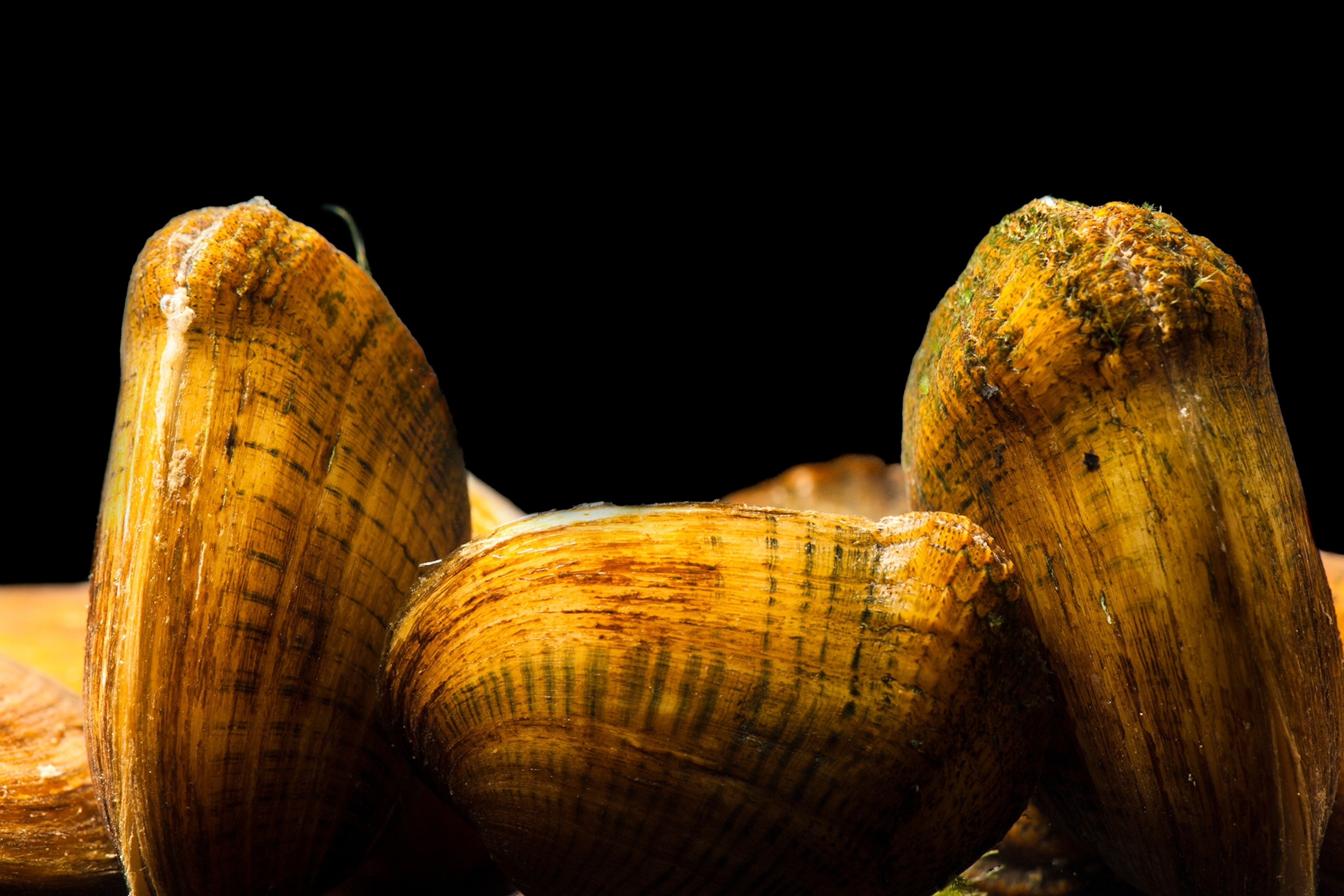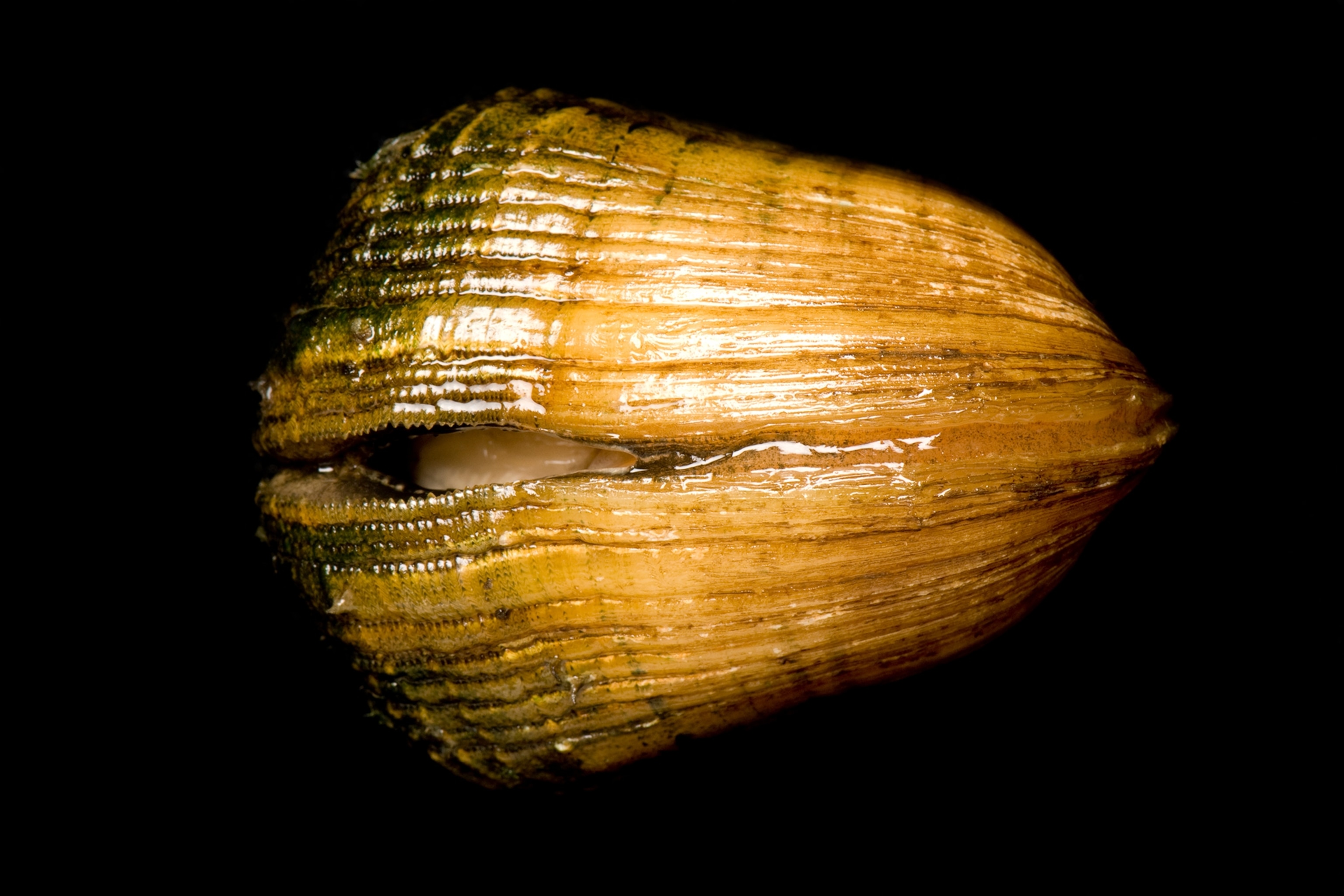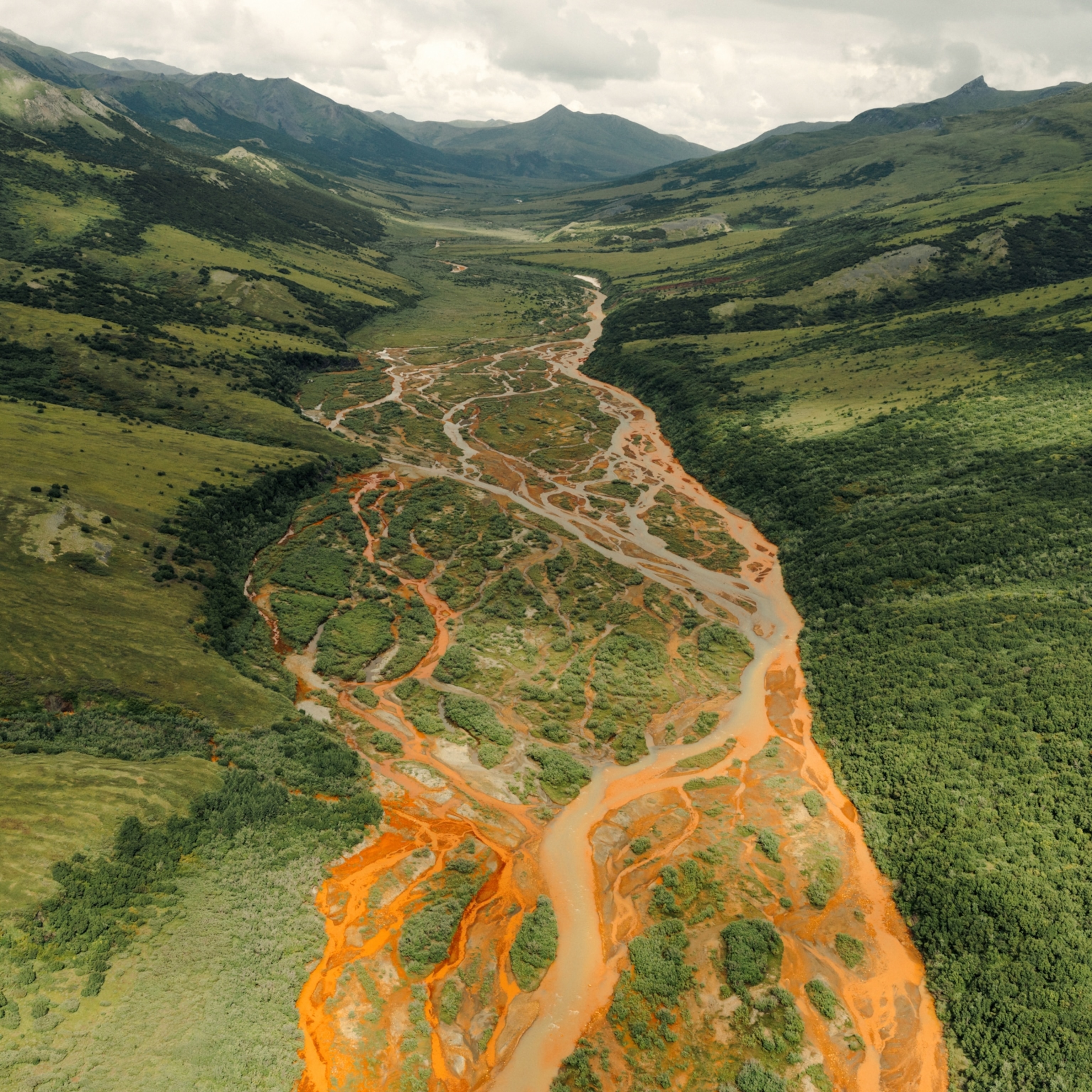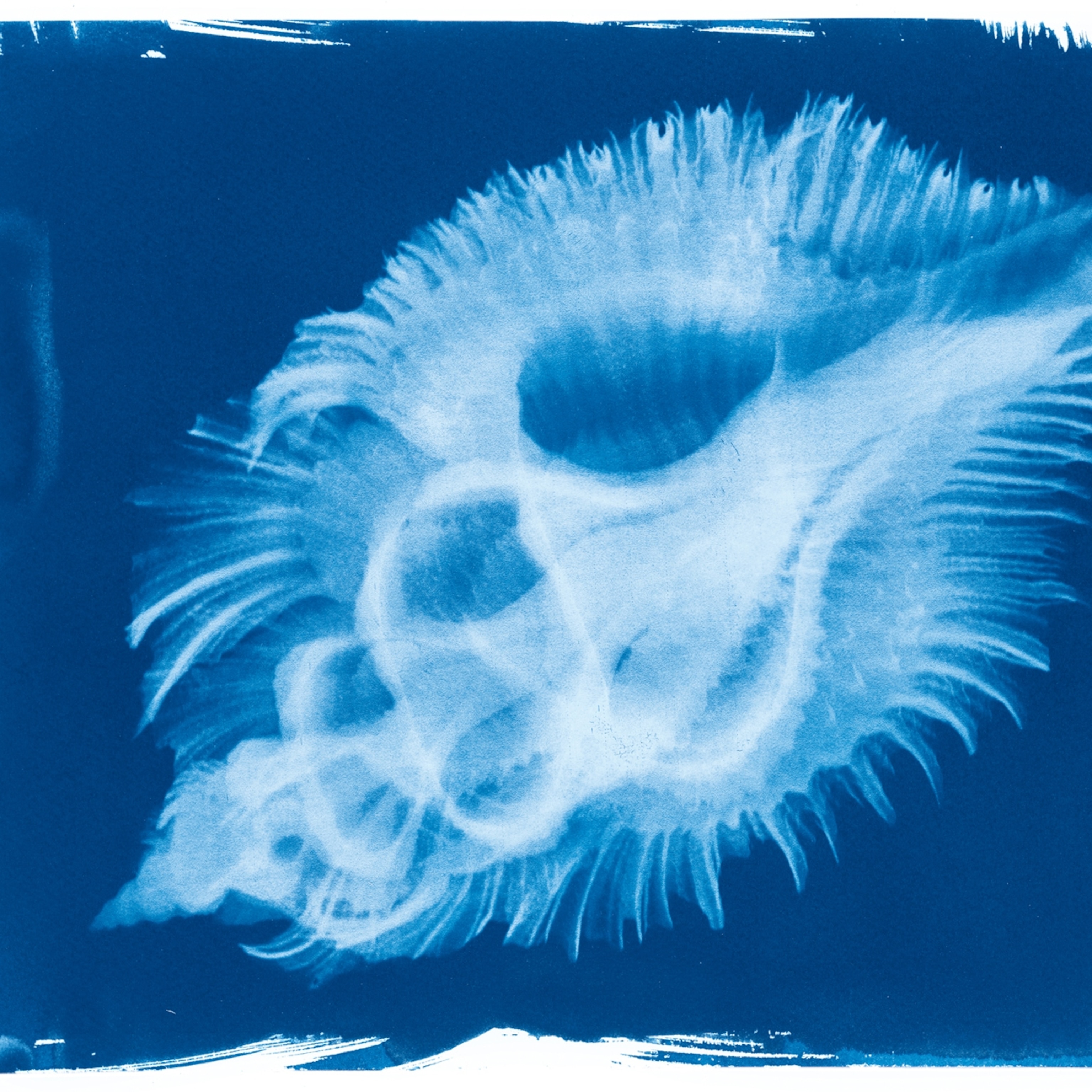Abingdon, Virginia — To an untrained eye, the crystal waters of the Clinch River, which meanders southwest across the Virginia-Tennessee border, look clean and healthy. But Jordan Richard can spot the dead bodies within seconds.
On a crisp fall morning on Sycamore Island, just before the Clinch crosses into Tennessee, Richard bends over to pluck a palm-size brown shell from the riverbed. What remains of the flesh that once clasped the two halves of the pheasantshell mussel (Actinonaias pectorosa) together now protrudes like a foul-smelling, gooey tongue. Noting that this mussel died within the past day or two, the U.S. Fish and Wildlife Service biologist tosses the shell into a labeled garbage bag for later analysis.
If he’s lucky, this deceased mollusk might hold clues to what is killing the Clinch River mussels.
Since 2016, numbers of pheasantshell, once one of the Clinch’s most abundant mussel species, have plummeted by more than 90 percent, according to research by Richard and Rose Agbalog, also a USFWS biologist. Populations of the river’s 30-some species of freshwater mussel have fallen by half. This die-off is one reason the Clinch has the highest concentration of endangered aquatic species on the continent, with 29 endangered mussels and 19 vulnerable fish species.
But this is not an isolated incident: Throughout the U.S. and Europe, staggering numbers of freshwater mussels are dying. To make the matter worse, no one knows why, prompting investigations into everything from infectious diseases to climate change to water pollution.
Raising the alarm about what Richard calls a freshwater mussel apocalypse has been a challenge, particularly because the mollusks lack the cultural cachet and fuzzy faces of pandas and tigers. (Read about silent streams and the collapse of freshwater species worldwide.)
Yet mussels are crucial to their ecosystems, both by cleaning water of impurities and creating shelter for other species via their shells (after their decades-long lifespans are over). Although freshwater mussels aren't edible—they’re tough and taste bad—there are freshwater mussel fisheries that serve an industry for buttons and pearls worth a few million dollars each year in the U.S. What’s more, ecologists estimate the invertebrates provide millions of dollars of services to the environment.
Tony Goldberg, a wildlife disease expert at the University of Wisconsin-Madison, puts mussels' importance more bluntly. Without them, he says, “the freshwater ecosystem will change forever.”
Cracking a mussel mystery
When Richard first joined the USFWS office in Abingdon, Virginia, in the fall of 2016, he had no idea he was stepping into one of the biggest ecological mysteries of the decade. A few weeks later, locals in Kyles Ford, Tennessee, reported an explosion of dead mussels.

So Richard and Agbalog piled into their battered SUV and drove an hour south to the Clinch, filling several trash bags with shells of dead mussels and bringing them back to the USFWS office. The pair’s initial analysis didn’t reveal a cause of death. And when they went back a week later, they found the bottom of the river was once again covered in dead pheasantshells.
In fall 2017, the same thing happened: a spike in dead pheasantshells. By 2018, other species began to succumb, including the Cumberland moccasinshell, dromedary pearlymussel, cracking pearlymussel, birdwing pearlymussel, and, as the die-off spread upstream from Tennessee into Virginia, the fluted kidneyshell. When Richard reached out to the close-knit freshwater mussel research community, scientists from around the country reported similar collapses, from Washington State to Oklahoma to Wisconsin.
At that time, ecology Ph.D. student Traci DuBose and her advisor, Caryn Vaughn of the University of Oklahoma, began investigating mussel die-offs in the Kiamichi and Mountain Fork Rivers. DuBose and Vaughn’s research tentatively explained their mussel deaths as a result of severe drought.
But for every other population, the cause remained a mystery. The lack of a solution ate at Richard, who ransacked the office searching for old documents that might contain any clues, filing them in a knee-high stack of brown accordion folders that have become bent and tattered from use.
One clue: In 1998, a truck filled with rubber accelerant overturned in a ditch next to the Clinch River, killing nearly all the mussels for hundreds of feet downstream. But the spill also annihilated scores of other species from the river—something neither Richard nor Agbalog had seen evidence of in recent times.
Across the pond, 26 European countries have reported up to 90 percent declines in various mussel populations, particularly the freshwater pearl mussel. The same potential threats are at play, in addition to dams, invasive species, and declines in host fish, which help mussels reproduce.
Research challenges

To figure out what was killing the Clinch River’s mussels, Richard knew that he was going to have to start thinking more systematically.
With help from Goldberg, Richard created an experiment to compare populations of sick mussels with healthy ones—a case-control study designed to see if there was something different about the sick mussels that might explain their deaths.
But with no idea what the disease might be—or if it was a disease at all—Richard and Goldberg had to cast a wide net, both literally and figuratively. So they started DNA-sequencing tissue from dead mussels to identify potential pathogens or stress-induced changes in their microbes that might leave the invertebrates susceptible to disease.
In early 2018, Richard and Agbalog divided their study sites at the Clinch River at the state border. In Tennessee, they chose areas where pheasantshell mussels were dying; sites north, in Virginia, appeared to have healthy mussels (those would be the controls in the experiment). But as soon as the field season started in late August, they ran into problems. (See amazing pictures of rivers.)
Whatever was killing the mussels had so devastated their Tennessee study sites that few mussels were left for them to study. Even worse, pheasantshells at some of the Virginia sites, including Sycamore Island, began dying in massive numbers. Only a single site remained unaffected.
But the biologists persisted, returning again and again to the same sites in 2019. So far, this year is just as grim as the previous three—and the biologists still aren’t any further along in figuring out the cause.
At your service
As she wades into the clear, rushing water beside Sycamore, Agbalog stops at a shoal in the middle of the river. “This used to have 60,000 mussels. Now it only has 2,000 to 3,000,” she says.
Raising his voice over the loud burbling of the water, Richard adds that mussels filter every drop of water that passes over their shoal at least three times. It’s a tremendous cleaning service for rivers, but it also means the mussels exposed are over and over to many pathogens.
“A mussel’s immune system is a healthy river,” Agbalog says. (Read more about threats to freshwater ecosystems.)

As he drives along the Clinch, Richard points out all the ways in which the river is suffering. There’s the changing climate, which could be giving the mussels heat stress. But Richard believes a bigger factor is logging, which robs the streams of the large hardwoods that provide shade and cool the water. Not only does heat itself stress mussels, which may make them more susceptible to disease, but also the increased temperatures can negatively affect the species on which mussels depend for food.
“This is what an extinction looks like. It has brought a population to its knees,” says Richard. “Can’t these guys catch a break?”
Give mussels a chance
Regardless of what is causing the mass die-offs, there’s no question a river without mussels has huge ripple effects on the river’s inhabitants, as the University of Oklahoma’s DuBose discovered.
When the mussels die, their decomposing bodies spur a brief pulse of productivity, followed by a steep decline in species diversity as rivers become cloudier and darker without mussels to filter the sediment. It’s a phenomenon Agbalog and Richard have seen along the Clinch.
“It’s not just mussels. Freshwater streams are declining in general,” says Rachel Mair, a biologist with the Harrison Lake National Fish Hatchery in eastern Virginia, who previously worked on the Clinch. “It’s very upsetting that mussels might not be around for future generations.”
Figuring out what’s going on with the mussels can help biologists like Mair develop a plan to propagate the remaining mussels in hatcheries and eventually release them back into the wild.
But finding the funds for such an endeavor won’t be easy, especially for a species that many people aren’t even aware of. But they should be, Richard says.
“What’s the worst that could happen if we care? We’d have a cleaner river.”









